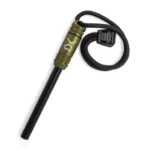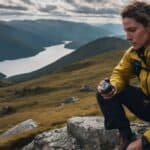Selecting the right campsite is crucial for a safe, comfortable, and enjoyable camping experience. A well-chosen campsite can provide protection from the elements, minimize environmental impact, and enhance your overall camping experience. This article will guide you through the essential factors to consider when choosing the perfect campsite, ensuring your safety and comfort in the great outdoors.
Table of Contents
Factors to Consider When Choosing a Campsite
Environmental Impact
Use established campsites whenever possible to minimize damage to the environment. If camping in a pristine area, choose durable surfaces like rock, gravel, or dry grass to pitch your tent. Avoid disturbing natural features like logs or rocks, and if you must move them, return them to their original position before leaving. By minimizing your impact, you help preserve the natural beauty of the area for future campers.
Safety
Select a site away from dead trees or trees with limbs that might fall during a storm. Avoid camping near lone trees, mountaintops, high ridges, and other potential lightning targets. Stay away from low-lying areas prone to flooding, such as valleys, canyons, and shallow riverbanks.
Prioritizing safety when choosing a campsite can help prevent accidents and ensure a worry-free camping experience. For more tips on staying safe while camping, check out our guide on how to stay safe during wildlife encounters.
Level Ground
Look for a relatively flat area to pitch your tent, ensuring a comfortable night’s sleep. If a perfectly level spot is not available, consider the direction of the slope and how it might affect your sleeping position. A level campsite will help you avoid rolling to one side of the tent or feeling uncomfortable throughout the night.
Drainage
Choose a campsite with good drainage to avoid water pooling around your tent during rain. Avoid setting up camp in depressions or at the bottom of hills where water is likely to collect. Good drainage will help keep your tent and gear dry, even in inclement weather.
Shade and Sunlight
Consider the amount of shade and sunlight your campsite receives throughout the day. Shade can provide relief from the heat, while morning sunlight can help dry out dew-covered gear. Finding a balance between shade and sunlight will help you stay comfortable and maintain the condition of your camping equipment.
Proximity to Water
Camp at least 200 feet away from water sources to protect fragile riparian ecosystems and avoid contaminating the water. Be aware of local regulations regarding camping near water sources, as they may vary. While it’s convenient to have water nearby, respecting the environment and maintaining a safe distance is essential.
Privacy and Seclusion
Select a campsite that offers some privacy and seclusion from other campers and trails. Use natural features like trees, bushes, and terrain to screen your campsite from view. Respect the privacy of others and adhere to quiet hours at public campgrounds and Scout camps. A secluded campsite can provide a more peaceful and immersive outdoor experience.
Wind Protection
Look for natural windbreaks like boulders, trees, or hillsides to shelter your campsite from strong winds. When positioning your tent, consider the direction of the prevailing winds to minimize exposure. Adequate wind protection will help keep your campsite comfortable and prevent damage to your gear.
Campsite Amenities
If camping in a developed campground, consider the amenities available at each site, such as fire rings, picnic tables, and access to water or restrooms. Choose a site that best meets your needs and preferences. Keep in mind that amenities can vary greatly between campgrounds, so research ahead of time to ensure you have what you need for a comfortable stay.
Conclusion
Choosing the perfect campsite is essential for a safe, comfortable, and enjoyable camping trip. By considering factors like environmental impact, safety, level ground, drainage, shade, proximity to water, privacy, wind protection, and amenities, you can select a campsite that meets your needs and enhances your outdoor experience.
Remember always to practice Leave No Trace principles and respect the natural environment and other campers. With these guidelines in mind, you’ll be well-equipped to find the ideal campsite for your next camping adventure.
For more information on essential gear for camping and outdoor adventures, check out our guide on survival gear for urban environments. Being prepared with the right equipment can make all the difference in ensuring a safe and enjoyable camping experience.






















Leave a Reply